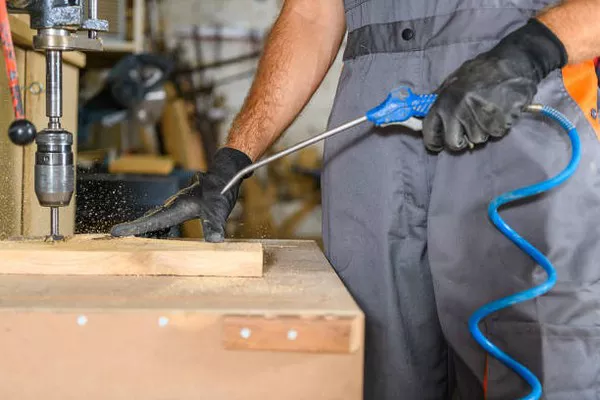Painting a car is a meticulous process that demands precision, skill, and the right tools. Among these tools, the compressor plays a pivotal role in ensuring a flawless paint job. Selecting the appropriate compressor for automotive painting is critical for achieving consistent results and enhancing efficiency. In this guide, we delve into the factors to consider when choosing a compressor for automotive painting, types of compressors available, and best practices for optimal performance.
Factors to Consider:
Air Pressure Requirements:
Automotive painting often requires high-pressure air to atomize paint efficiently. Determining the air pressure requirements based on the paint gun specifications is essential. A compressor with adequate pressure output ensures consistent atomization, leading to uniform paint coverage.
Air Volume (CFM):
Cubic Feet per Minute (CFM) is a crucial metric indicating the volume of air delivered by the compressor. Different paint guns have varying CFM requirements. It’s imperative to match the compressor’s CFM rating with the requirements of the paint gun to maintain a steady paint flow and prevent pulsation.
Tank Size:
The tank size determines the compressor’s duty cycle—the duration it can sustain continuous operation before requiring a cooldown period. For automotive painting, a compressor with a larger tank reduces the frequency of cycling, providing a more consistent airflow and minimizing interruptions during painting sessions.
Portability and Space:
Consider the workspace layout and portability requirements when selecting a compressor. For smaller workshops or mobile painting setups, a compact and portable compressor is preferable. However, larger facilities may opt for stationary compressors with higher capacity and horsepower.
Noise Level:
Automotive painting environments demand relatively quiet operation to ensure focus and concentration. Compressors with noise-reducing features or low-decibel ratings are suitable for maintaining a conducive working atmosphere.
Types of Compressors:
Piston Compressors:
Piston compressors, also known as reciprocating compressors, are common in automotive painting applications. They utilize pistons driven by a motor to compress air, delivering high-pressure output suitable for paint spraying. These compressors are available in both single-stage and two-stage configurations, with two-stage compressors offering higher pressure and efficiency.
Rotary Screw Compressors:
Rotary screw compressors operate using rotors to compress air continuously. They are known for their reliability, efficiency, and consistent airflow, making them suitable for large-scale automotive painting operations. While initially more expensive, rotary screw compressors offer long-term cost savings through energy efficiency and minimal maintenance requirements.
Scroll Compressors:
Scroll compressors employ spiral-shaped scrolls to compress air, resulting in smooth and quiet operation. While less common in automotive painting, they are suitable for smaller workshops or specialized applications where noise and space are significant considerations. Scroll compressors are known for their compact size, reliability, and low maintenance requirements.
Best Practices for Optimal Performance:
Regular Maintenance:
Scheduled maintenance, including filter replacement, lubrication, and inspection of components, is crucial for ensuring the compressor’s longevity and performance. Neglecting maintenance can lead to decreased efficiency, increased downtime, and potential damage to the equipment.
Proper Air Treatment:
Installing air treatment components such as filters, dryers, and regulators is essential for delivering clean, dry, and consistent air to the paint gun. Moisture and contaminants in the compressed air can cause paint defects, affecting the quality of the finish. Investing in quality air treatment equipment is paramount for achieving professional results.
Correct Hose and Fitting Selection:
Using the appropriate hoses and fittings rated for the compressor’s pressure and airflow is vital for preventing air leaks and maintaining system integrity. Inspect hoses regularly for wear and damage, and replace them as needed to ensure uninterrupted paint delivery.
Optimal Operating Conditions:
Position the compressor in a well-ventilated area to prevent overheating and ensure adequate airflow for cooling. Maintain proper clearance around the compressor to facilitate airflow and prevent obstructions. Additionally, monitor ambient temperature and humidity levels to optimize paint application conditions.
Conclusion:
Selecting the right compressor for automotive painting is a crucial decision that significantly impacts the quality and efficiency of the paint job. By considering factors such as air pressure requirements, CFM rating, tank size, portability, and noise level, along with choosing the appropriate compressor type, automotive painters can enhance their workflow and achieve superior results. Implementing best practices for maintenance, air treatment, hose selection, and operating conditions further ensures optimal compressor performance and contributes to the overall success of automotive painting endeavors.

